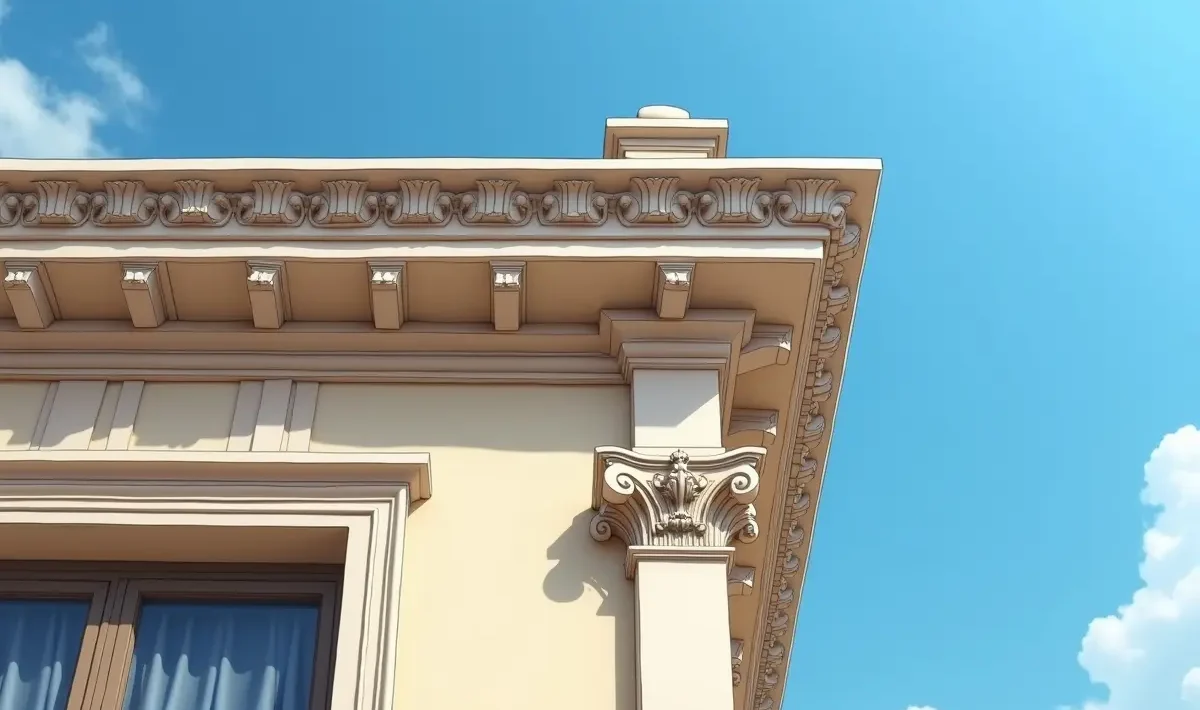How to Use Cornice to Add Architectural Flair to Your Space
When it comes to home design, the small details often make the biggest impact. One such detail? Cornice. If you’ve been thinking about ways to add a little more character to your space but don’t want to embark on a massive renovation, introducing a cornice could be the perfect solution.
But what exactly is cornice, and how does it transform a room? Let’s dive into how this architectural feature can bring out the best in your home, adding charm and elegance without a major overhaul.
What is Cornice?
First things first: a premium cornice is a decorative moulding that sits where the wall meets the ceiling. Think of it as the frame for your room—it’s subtle, but its presence makes a big difference in how your space feels. Cornices come in many styles, from intricate, ornate designs to simpler, modern profiles.
Cornice is part of a broader category called “coving,” but while coving is usually a simple curved moulding, cornice is often more detailed, giving your room that extra architectural edge.
Why Consider Cornice?
You might wonder why something as small as a strip of decorative moulding matters. Here are a few reasons why adding a cornice can transform a room:
- Visual interest – Cornices draw the eye upwards, giving the impression of height and grandeur.
- Hides imperfections – Have unsightly gaps or uneven edges where your wall meets the ceiling? A cornice can neatly conceal those flaws.
- Period charm – If you’re restoring an older home, adding a period-appropriate cornice can really bring back its former glory.
- Complements other design elements – A well-chosen cornice can tie together architectural features like skirting boards, architraves, and window frames.
- Versatility – Whether you’re going for a sleek, modern look or something more traditional, there’s a cornice style to suit any aesthetic.
Choosing the Right Cornice for Your Space
Cornices come in various materials and designs, and the best one for your home depends on both your personal style and practical considerations.
1. Material Options
Cornices are made from several materials, each with its own advantages:
Plaster
This is the traditional choice and offers a very high-end, authentic look. If you want a classic, period-style cornice, plaster is the way to go. However, it’s more expensive and may require professional installation.
Polyurethane or Polystyrene
These are much lighter and more affordable options. They’re easier to install and come in a range of styles that can mimic plaster. The downside? They might not have the same long-lasting feel as plaster.
MDF (Medium-Density Fibreboard)
This is a more modern, budget-friendly material often used for contemporary styles. It’s durable, easy to paint, and can give your room a sharp, clean finish.
2. Design Styles
When it comes to design, your choice should reflect the overall look you’re aiming to achieve in your home. Some common styles include:
- Classical – Intricate designs with lots of detail, perfect for period homes or rooms with high ceilings.
- Georgian or Victorian – These eras feature bold, elegant cornices with multiple layers and ornamentation, ideal for traditional interiors.
- Art Deco – If you’re after a retro, glamorous feel, Art Deco cornices are characterised by clean lines and geometric shapes.
- Modern – Sleek and simple, these cornices are minimalist and suit contemporary interiors. Often, they have sharp edges and fewer details to keep the focus on the space itself.
3. Room Size & Ceiling Height
Choosing the right size of cornice matters, too. For rooms with higher ceilings, you can go big and bold with your cornice selection. Larger, more detailed cornices help to balance out tall spaces. In smaller rooms or spaces with lower ceilings, opt for a simpler, narrower design to avoid overwhelming the room.
Installation: DIY or Call a Pro?
Once you’ve picked the perfect cornice, the next step is installation. Depending on the material and your DIY skills, you might be able to install it yourself. Polyurethane and polystyrene cornices, for example, are lightweight and often come with easy-to-follow installation instructions.
If you’re dealing with plaster or an intricate design, it might be best to leave it to the professionals. The heavier weight of plaster and the need for seamless joints can make installation tricky if you’re not experienced. It’s better to get it done right than to risk a poor fit or gaps.
Painting and Finishing Touches
After installation, your cornice will likely need painting to blend seamlessly with your room. While white is a classic and safe option, there’s no rule saying your cornice has to be neutral. You could go bold with a contrasting colour to make it a focal point, or match it to the wall colour for a subtler effect. The key is to ensure it complements your overall design scheme.
Remember to use a high-quality paint, especially if you’ve chosen a plaster cornice, as it will help maintain the moulding’s sharp details over time.
Transform Your Space with Cornice
Incorporating cornice into your space is a relatively simple way to enhance your home’s architectural character. Whether you’re adding it to a single room or throughout the entire house, it’s an elegant feature that can significantly elevate the feel of your interiors.
No matter what style you choose, cornices add that little something extra that takes a room from ordinary to memorable. So, if you’re looking to refresh your space, consider the power of this often-overlooked detail. It’s a small change that can make a big difference in the atmosphere of your home.

